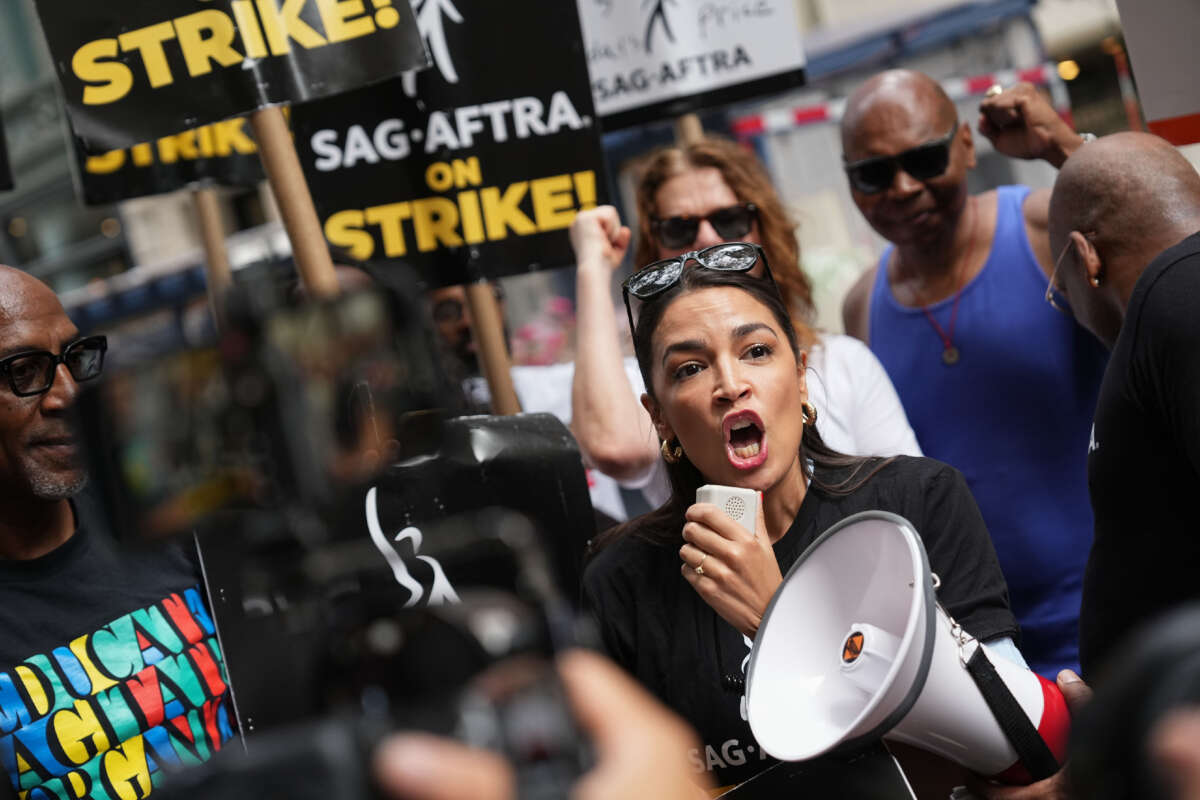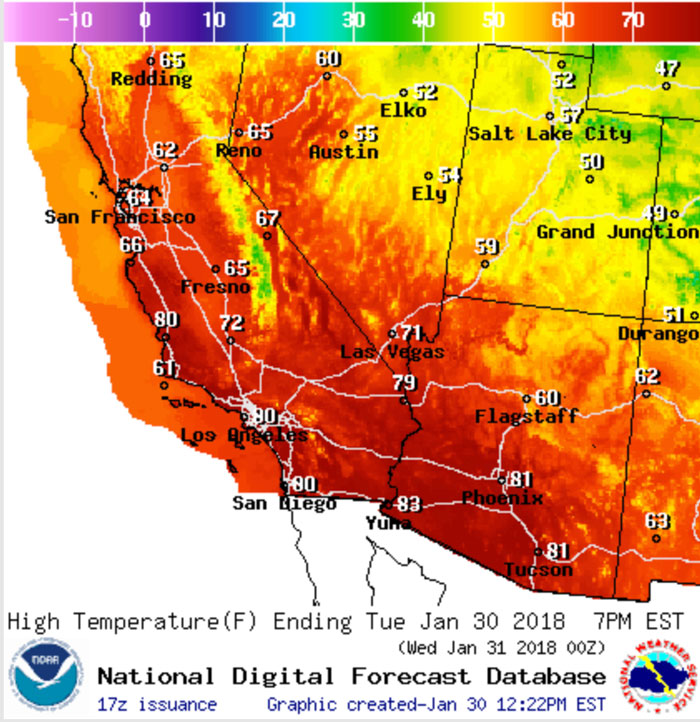SAG-AFTRA Joins WGA On Picket Line: What This Means For Hollywood

Table of Contents
The Combined Power of SAG-AFTRA and WGA
The combined strike force of SAG-AFTRA and WGA represents a massive show of union solidarity and collective bargaining power, effectively shutting down major film and television production across the country. This unprecedented joint action amplifies their demands for fair wages, improved benefits, and crucial protections against the impact of artificial intelligence (AI) on their professions. The solidarity between the two unions signals a potential paradigm shift in labor relations within the entertainment industry, moving beyond individual union struggles to a unified front against perceived industry injustices.
-
Unprecedented Unity: This is the first time in decades that both actors and writers have simultaneously walked off the job, creating a powerful collective bargaining force. Previous individual strikes, like the 2007-2008 WGA strike, significantly impacted Hollywood, but the current combined action is on an entirely different scale.
-
Amplified Negotiating Power: The joint strike dramatically increases the negotiating power of both unions. With nearly all major productions at a standstill, the economic pressure on studios and streaming services is immense.
-
Potential for Wider Action: The success of this joint effort could inspire other entertainment unions, such as those representing directors, editors, and technicians, to join the strike, further escalating the industry-wide shutdown and highlighting the widespread dissatisfaction with current working conditions and compensation.
Key Demands of SAG-AFTRA and WGA
The core demands of SAG-AFTRA and the WGA center around fair compensation, improved working conditions, and protections against the evolving landscape of the entertainment industry. These crucial issues have long been points of contention between the unions and major studios and streaming platforms.
-
Fair Compensation for Streaming Services: Actors and writers argue that current compensation models for streaming services are severely inadequate. Traditional residuals, a key component of actor and writer compensation in the past, have significantly diminished with the rise of streaming, leaving many struggling to make a living.
-
Residuals and Backend Participation: The demand for fair residuals and backend participation is central to the strike. These payments, historically tied to the success of a production, are vital for long-term financial stability for many actors and writers. Streaming platforms' opaque revenue structures make negotiating fair residuals particularly challenging.
-
AI Safeguards: Both unions are pushing for strong protections against the use of AI to replace human workers. The concern is not just about job displacement, but also about the potential for AI to diminish the creative process and devalue the contributions of human artists. This involves establishing clear guidelines for the ethical use of AI in the creation and distribution of entertainment content.
-
Improved Working Conditions: The demands also encompass improvements to working conditions, including addressing issues such as excessively long working hours, inadequate compensation for self-tape auditions, and excessive travel requirements for productions. These often overlooked issues directly impact the well-being and financial security of entertainment professionals.
The Impact of the Double Strike on Hollywood
The double strike has had a significant and wide-ranging impact on the Hollywood landscape, affecting production, economics, and the release schedule of numerous projects.
-
Major Production Shutdowns: Countless film and television productions have ground to a complete halt, causing significant delays and uncertainty for the industry. From major studio blockbusters to independent productions, virtually all sectors are affected.
-
Economic Ramifications: The economic consequences are far-reaching, impacting not only the studios and production companies but also numerous related businesses, including catering services, transportation providers, and post-production houses. The ripple effect is felt throughout the local economies of major production hubs like Los Angeles and New York City.
-
Delayed Releases: The postponement or cancellation of numerous movie and television show releases is inevitable, creating a potential content drought for streaming services and movie theaters. The financial implications for studios and distribution companies are potentially substantial.
-
Impact on Streaming Services: Streaming services are facing a potential content shortage and significant programming delays. The lack of new content directly impacts their subscriber numbers and, ultimately, their revenue streams.
Potential Outcomes and Negotiations
The duration of the strike and the ultimate outcome remain uncertain, hinging on the success of ongoing negotiations between the unions and the Alliance of Motion Picture and Television Producers (AMPTP).
-
Negotiation Challenges: Reaching a settlement requires significant compromise from both sides. The core issues are deeply entrenched, and finding common ground will require extensive dialogue and potential concessions.
-
Long-Term Effects: The long-term effects of the strike could significantly reshape the entertainment industry, potentially leading to fundamental changes in compensation models, working conditions, and the use of AI.
-
Potential Compromises: Possible compromises might involve tiered compensation models for streaming content, increased transparency in revenue sharing, and stricter regulations regarding the use of AI in creative processes.
-
Future Industry Practices: Regardless of the immediate outcome, this strike is likely to catalyze long-term changes in how the entertainment industry operates, particularly concerning the balance of power between studios and creative professionals. This could involve new industry standards, legal frameworks, or even alternative models of production and distribution.
Conclusion:
The SAG-AFTRA and WGA joint strike represents a pivotal moment in Hollywood history. The combined power of these unions is forcing a much-needed conversation about fair compensation, equitable working conditions, and the ethical considerations surrounding technological advancements in the entertainment industry. The outcome of this strike will profoundly shape the future of film and television production. Stay informed about the latest developments in the SAG-AFTRA strike and the ongoing Hollywood strike to understand how this unprecedented event will impact your favorite shows and movies. Keep checking back for updates on the SAG-AFTRA and WGA negotiations as this critical situation unfolds.

Featured Posts
-
 The Sound Of Family Cp Music Productions A Father And Son Duo
May 13, 2025
The Sound Of Family Cp Music Productions A Father And Son Duo
May 13, 2025 -
 Prepare For A Mini Heat Wave Southern California Weekend Weather Alert
May 13, 2025
Prepare For A Mini Heat Wave Southern California Weekend Weather Alert
May 13, 2025 -
 Copyright Concerns High Profile Celebrities Petition Uk Prime Minister Against Ai Use
May 13, 2025
Copyright Concerns High Profile Celebrities Petition Uk Prime Minister Against Ai Use
May 13, 2025 -
 Halal Slaughter A Vegan Perspective On Ethical Concerns
May 13, 2025
Halal Slaughter A Vegan Perspective On Ethical Concerns
May 13, 2025 -
 Pregnant Cassie And Alex Fine Mob Land Premiere Photos
May 13, 2025
Pregnant Cassie And Alex Fine Mob Land Premiere Photos
May 13, 2025
